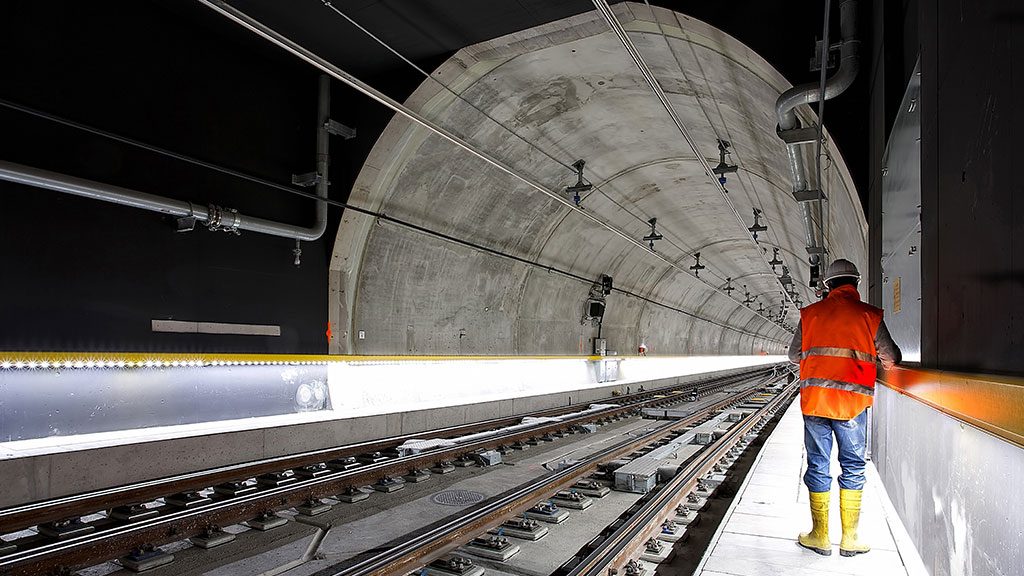Despite declining transit ridership since the start of the COVID-19 pandemic, the Ontario government remains resolute in its plans to undertake four major subway projects as a key component of its economic recovery plans, Minister of Transportation Caroline Mulroney told a recent webinar audience.
The government is consulting with a broad range of stakeholders to ensure its plans remain viable and it is streamlining the procurement and permitting processes to ensure there are no barriers to project implementation, the minister said during an Aug. 5 webinar hosted by the Canadian Council for Public-Private Partnerships (CCPPP).
Metrolinx president and CEO Phil Verster also participated as a speaker, discussing how the agency was preparing for possible changes in ridership patterns, and CCPPP president and CEO Mark Romoff served as host of the transit-themed event.
“Even though there are all these changes in how people use transit and how it is funded, we still have a very strong case for moving forward with our plans to build more transit,” said Mulroney. “The city of Toronto continues to grow; people will come back to transit.
“There is still a case for us moving forward with our four priority projects.”
She reiterated the pledge later in the session in response to a question asking why the Eglinton Crosstown project was behind schedule, with a 2022 completion date now targeted.
“We never stopped working on these projects,” Mulroney remarked. “We all agree these are essential to Ontario’s economy.
“Our commitment has not wavered.”
Mulroney said throughout the outbreak the ministry has been in regular contact with its transit partners and stakeholders. She said she also convened a ministerial council with experts in transit, construction, logistics and technology to help assess the effects of COVID-19 on the transit sector.
Bill 171, the Building Transit Faster Act, was passed in July containing a number of measures to expedite planning and project delivery, Mulroney noted.
“We are listening to the market,” she said. “Metrolinx and IO have been doing market soundings to understand what risks and challenges the market sees…so we can address challenges and attract as many bidders as possible and deliver value as well as quality.”
Verster noted that IO has responded to those market soundings by significantly changing how it assigns risk, and it is showing more flexibility contract by contract.
We are taking risk back in huge chunks,
— Phil Verster
Metrolinx
“I am of the strong view that P3 contracts are not there to be formulaically applied,” he said.
“We must figure out what is the best contract at the best point in time. We have seen that, we are now doing alliance contacts and we are doing P3s without private capital in, all part of a different risk transfer that we are doing.”
Bill 171 is an integral part of how Metrolinx will manage projects better in the future and it helps with the risk-transfer equation, Verster said.
“Anyone who is working with us on the current contracts that we have on the market knows that we are taking risk back in huge chunks,” he remarked.
As part of its listening exercises, Verster said, the government is weighing comments from partners who are suggesting that post-COVID there might be decentralizing of office space, with more people working from home and a change in ridership patterns. But Metrolinx still believes there will be continuing need for the transit projects it has on its agenda, he said.
“Post-COVID it’s likely we will have less waves of people travelling in in the morning all coming to work in highrise buildings downtown,” said Verster.
“To what extent, we will see, but what is so important about the minister’s comments, we have carefully looked at the challenges we have with the GO network and the GO expansion project. It is all about creating two-directional capacity. So I see a future for that type of network with shorter trains potentially but more frequent trains running in both directions all times of the day. When people will travel in the morning peak out of Toronto towards Pickering for example, or towards Burlington and Hamilton, and that is a very real future we are in.”
Building subways is about creating connectivity, establishing a network that will serve the needs of people as “social beings,” Verster said.
“We will always travel, we will always go from point to point,” he said.
“There is a valuable interaction face to face and that is what we are setting the economy of Toronto and the GTA up for.”
Follow the author on Twitter @DonWall_DCN.











Hamilton is still waiting? King Street east looks like Detroit with vacant properties and building that taxpayers bought for an LRT.